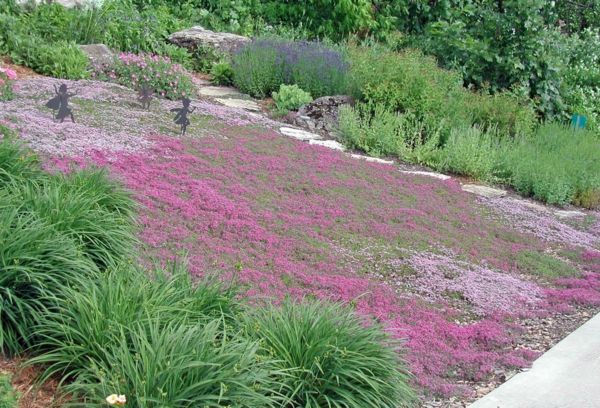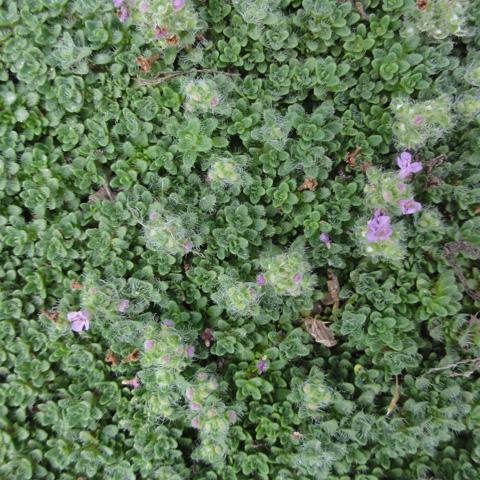

If your creeping thyme covers a large area, you can mow it instead.įor best results, avoid pruning your creeping thyme on a hot, dry day, as this can stress the plant. This helps prevent the plant from becoming leggy and teaches it to focus on producing new foliage, rather than spreading. Use sharp scissors or garden shears to remove dead or diseased foliage and old, woody stems.

Creeping thyme can be pruned at any time during the growing season, so trim it back whenever you want to help it maintain the desired size. Start by pruning your creeping thyme regularly. With a little careful management, you can keep your creeping thyme under control so the other plants in your garden can flourish as well. However, the same could be said of many other fast-growing ground covers, including chamomile. But if you allow it to grow wild, then it can become somewhat invasive. How can you manage creeping thyme?Ĭreeping thyme isn’t invasive by nature. Creeping thyme is a fast-growing ground cover, but is creeping thyme invasive? No. That’s largely because creeping thyme is easy to remove and control, and that brings us to our next topic of discussion. While creeping thyme certainly ticks many of these boxes, they don’t meet all of the necessary requirements to be considered an invasive species. Invasive plants are often not favored by foragers, like deer, which allows them to grow freely undisturbed. Even if just a piece of a root or stem is left behind, the invasive plant can regrow and live to fight another day. Because invasive plants can be propagated vegetatively, they can be tough to remove. Many invasive species propagate quickly, either by producing huge quantities of seeds or through vegetative reproduction. But invasive plants can adapt to different sun, soil, and climate conditions, allowing them to thrive in a variety of environments. Invasive plant species have their own set of preferred growing requirements, the same as any other plant. Invasive plants grow quickly, robbing native plants of valuable resources, resulting in a steady decline in native vegetation. To truly be considered invasive, a plant must meet several requirements. But is creeping thyme invasive, or is this just gardening hearsay?Īlthough creeping thyme is hardy and grows quickly, it is not considered to be an invasive species. When all of your creeping thyme’s growing requirements are met, the plant will grow extremely well - so much so that its growth may surprise you. It can also self-seed, allowing it to spread effortlessly. Like other plants native to the Mediterranean region, including rosemary and lavender, creeping thyme performs best in well-draining sandy soils and does not require regular fertilization to grow well.Ĭreeping thyme is a fast-growing ground cover that can spread rapidly.
THYME GROUND COVER BACKYARD FULL
Creeping thyme is highly adaptable, growing well in full sun to partial shade. Here in the United States, creeping thyme is hardy from zones 4 through 10 and can tolerate temperatures down to around 20 degrees Fahrenheit. Native to the western Mediterranean region, creeping thyme can be found growing wild in France, Spain, and Italy. That’s a huge advantage, especially if you’re a gardener who wants a gorgeous yard but doesn’t have much time to dedicate to maintenance work. Although it isn’t often used in cooking, like other thyme varieties, its easy-going nature means it’s a cinch to care for. This fast-growing ground cover adds interest to flower beds, rock gardens, and raised garden beds.Ĭreeping thyme is a hardy little herb. Its eye-catching appearance and pleasant fragrance make it a popular choice for landscaping.
THYME GROUND COVER BACKYARD HOW TO
How To Build A Barred Owl Nesting Box For Your Backyard.How To Attract Butterflies to Your Garden.Woodpecker Species of the United States.How To Get Rid Of Mushrooms In Your Yard.What Is 19-19-19 Fertilizer And When Should You Use It?.How To Transplant Plants Without Killing Them.The Importance Of Growing Native Pollinator Plants In Your Garden.The Ultimate Guide To Growing French Lavender.


 0 kommentar(er)
0 kommentar(er)
